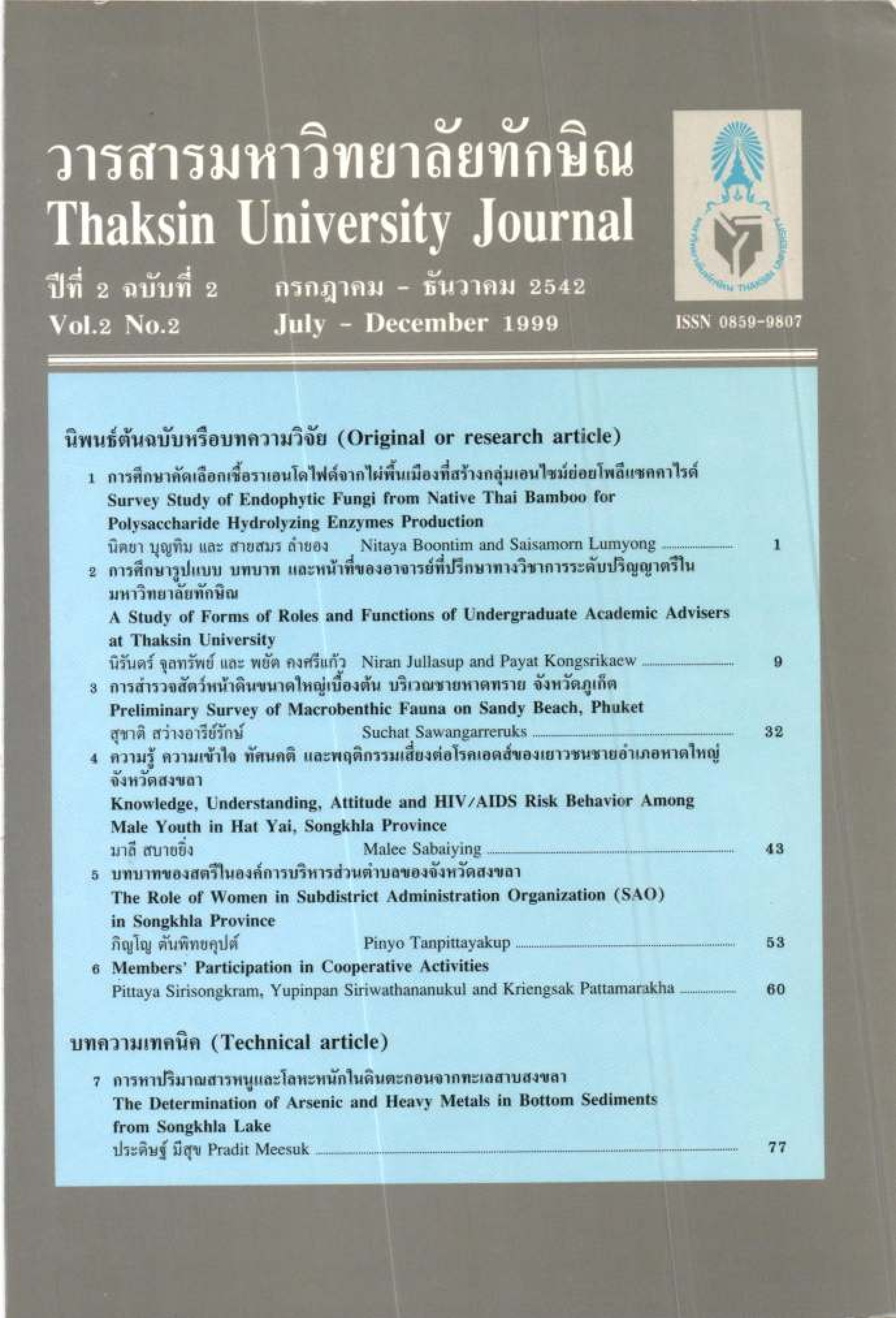ความรู้ ความข้าใจ ทัศนคติ และพฤติกรรมเสี่ยงต่อโรคเอดส์ของเยาวชนชายอำเภอหาดใหญ่ จังหวัดสงขลา
Main Article Content
Abstract
The objective of this studi'was to examine the knowledge, understanding, attitudes, and HIV/ AIDS risk behavior ilmong male youth. Data was collected from 1oo male youth between the ages of 1bza in the Hat Yai Municipality of Songkhla Province. Fifty percent ofrhe yourh were in school and fifty percent out - ol - school.
The results of the study fbund that the rnale youth have relatively good knowlcdge about the transmission of HMut still have an inco[ect understanding about the symptoms of HIVzAIDS and care and treatment of persons with HIVzAIDS. Most of the youth feel that they arc at low risk of AIDS, are not atiaid of bcing infected with HIV. Arritudes bwards person with HIV,, AIDS, on one level there was acceptance of persons with HIV/AIDS. It was found that more than fifty percent ofthe male youth are sexually flctive and do nor use condoms. These youth are arso more likely to have casuar sexual encountem than visit female sex workets. It is also likely that they will have unprotected sex because they are ccrtain that their female partner is not infected.
Alier l.hey have artained knowledge of HIV/AIDS the male youth, for the most part, have changed their behavkrr by being more caretul, using prevention more ofien, and using condoms more frequently when having sex. The recommendations from the results of the research are knowledge an6 understanding of Hlv/AIDS, especially about rhe symptoms and carc and heatrnent of HIv/AIDS, and information on prevention should be given to the youth in greater detail.
The results of the study fbund that the rnale youth have relatively good knowlcdge about the transmission of HMut still have an inco[ect understanding about the symptoms of HIVzAIDS and care and treatment of persons with HIVzAIDS. Most of the youth feel that they arc at low risk of AIDS, are not atiaid of bcing infected with HIV. Arritudes bwards person with HIV,, AIDS, on one level there was acceptance of persons with HIV/AIDS. It was found that more than fifty percent ofthe male youth are sexually flctive and do nor use condoms. These youth are arso more likely to have casuar sexual encountem than visit female sex workets. It is also likely that they will have unprotected sex because they are ccrtain that their female partner is not infected.
Alier l.hey have artained knowledge of HIV/AIDS the male youth, for the most part, have changed their behavkrr by being more caretul, using prevention more ofien, and using condoms more frequently when having sex. The recommendations from the results of the research are knowledge an6 understanding of Hlv/AIDS, especially about rhe symptoms and carc and heatrnent of HIv/AIDS, and information on prevention should be given to the youth in greater detail.
Article Details
Section
Research Articles


